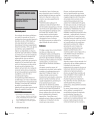


Rajesh Bhattacharya is at the South Asian University, New Delhi and Kalyan Sanyal is at the Calcutta University.Ĭcording to the India: Urban Poverty Report, the urban population in India is growing at a rate faster than the total population, and by 2030, 41% of the country’s people will live in cities and towns (GOI 2009). The authors are indebted to an anonymous referee of this journal for useful comments on an earlier draft of this essay. However, the condition of post-coloniality, characterised by capital and its wasteland, manifests itself in the new towns as the slow but inevitable encroachment of the excluded population on these new zones of exclusivity. The globalised economy, hegemonised by immaterial labour, creates conditions for these new towns to culturally secede from their national or regional location and align themselves with the global cities. Rajesh Bhattacharya, Kalyan Sanyal India’s “bypass” approach to urbanisation seeks to decongest its post-colonial metropolises by building new towns for a new economy of knowledge-based activities and businesses driven by global capital on their fringes. REVIEW OF URBAN AFFAIRS Bypassing the Squalor: New Towns, Immaterial Labour and Exclusion in Post-colonial Urbanisation


 0 kommentar(er)
0 kommentar(er)
